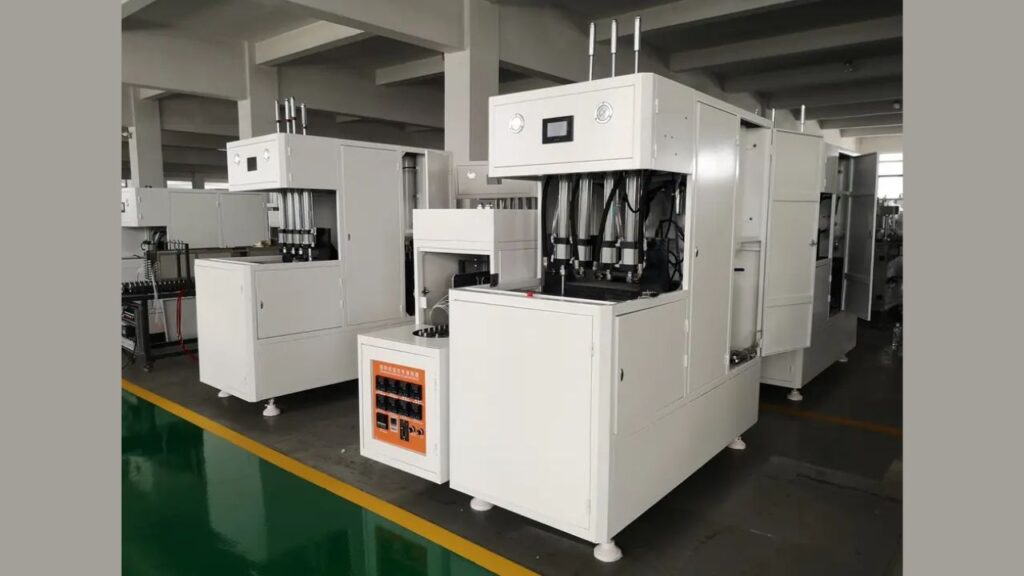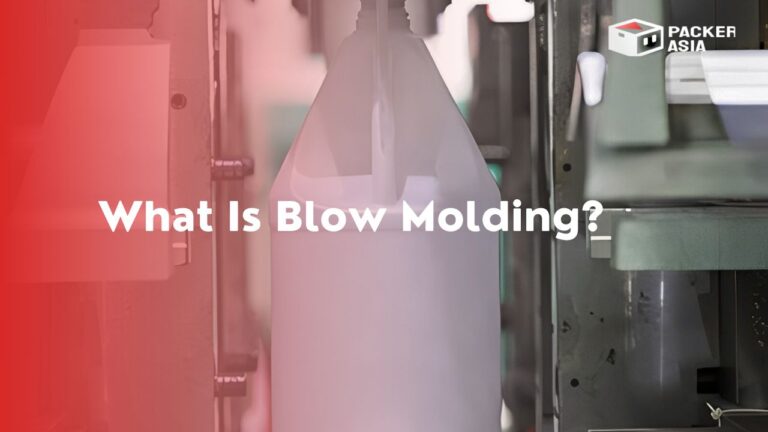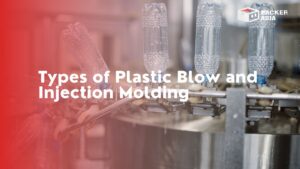What is blow molding? Blow molding is a molding process that uses plastic to create hollow objects in manufacturing.
Moreover, do you know the process of blow molding? Do you understand the types of blow molding? How much do you know about the past, present and future of blow molding? Perhaps you don’t know nearly enough about it.
Therefore, this blog post will take you through a systematic understanding of blow molding. By understanding blow molding, you will have a deeper understanding of blow molding machines, which are productivity tools in manufacturing.
For your business, choosing the right blow molding machine can help you increase productivity and help your business achieve greater success.

Overview of Blow Molding
Blow molding is a specialized process used in manufacturing to create hollow objects, typically made of plastic. The technique is highly versatile and is used to produce a wide range of products, from small containers to large tanks.
The concept of blow molding has its roots in the traditional art of glassblowing, a technique that has been used for centuries to form glass into specific shapes.
However, instead of using glass, blow molding uses plastic, and instead of human breath, it uses compressed air, making it a more scalable and versatile process.
In the manufacturing industry, blow molding is used to create a variety of hollow objects made of plastic. These can range from small items like water bottles, shampoo containers, and milk jugs, to larger industrial items like storage tanks or big plastic drums.
Overview of the Blow Molding Process
The blow molding process begins with the melting of plastic, which is then formed into a parison, a small tube with an opening for air.
The parison is placed into a mold, and air is blown into it, causing the plastic to expand and take the shape of the mold.
Once the parison is inflated within the mold, it is allowed to cool, causing the plastic to harden in the shape of the mold.
After the plastic has cooled and hardened, the mold is opened, and the newly formed object is removed.
Types of Blow Molding
There are two main types of blow molding
Extrusion Blow Molding (EBM)
Extrusion blow molding (EBM) is the most common type of blow molding.
In this process, plastic is melted and extruded into a parison, which is then inflated within a mold to create the desired shape.
EBM is known for its fast production rates and its ability to incorporate handles and mold complex parts.
Injection Stretch Blow Molding
Injection stretch blow molding (ISBM) is another type of blow molding, which involves two stages.
In the first stage, a preform is created using an injection molding process.
In the second stage, this preform is heated and stretched using a blow molding process to create the final product. This method is typically used to create plastic bottles.
Comparison of the One-Stage and Two-Stage Processes in Injection Stretch Blow Molding
In the one-stage ISBM process, the preform manufacture and bottle blowing are done in the same machine.
In the two-stage process, the preform is molded first, then later fed into a reheat stretch blowing machine.
The two-stage process is more expensive but can offer better control over the final product’s properties.
Blow Molding vs. Injection Molding
The differences between the two are discussed below, along with specific uses:
Differences Between Blow Molding and Injection Molding
While both blow molding and injection molding are used to create plastic parts, they serve different purposes and have different applications.
Blow molding is used to create hollow parts, while injection molding is used to create solid parts. The main difference between the two processes lies in how the plastic is formed.
In blow molding, plastic is melted and formed into a parison, which is then blown into the shape of the mold. In injection molding, melted plastic is injected into a mold and allowed to cool and harden.
The Specific Uses of Blow Molding and Injection Molding
Blow molding is typically used when the final product needs to be hollow, such as bottles, containers, or tanks.
On the other hand, injection molding is used when the final product needs to be solid, such as toys, automotive parts, or household items.
History of Blow Molding
Blow molding has its origins in glassblowing, a technique that has been used for centuries to form glass into specific shapes.
The modern process of blow molding was developed in 1938 when two inventors patented a mass manufacturing technique for blow molding and sold it to the Hartford Empire Company.
Current State of the Blow Molding Industry
The blow molding industry has seen significant growth since its inception, particularly with the rise of the American soft drink industry in the mid-1970s.
Today, the industry continues to thrive, producing billions of blow-molded products each year.
Advancements of Blow Molding
Recent advancements in blow molding include the use of amorphous metals or bulk metallic glasses.
These materials offer excellent heat conductivity and resistance to wear and tear, making them ideal for the blow molding process.
Your Next Steps!
Plastic molding is an important process in the manufacturing industry and is used to make a wide range of products from consumer goods to industrial equipment.
Acquiring knowledge about blow molding will help us to understand blow molding machine more comprehensively and choose a suitable blow molding machine for our business.
Of course, what kind of blow molding machine to buy is an important decision, and we hope to save you time and effort in this matter, so please contact us today!





